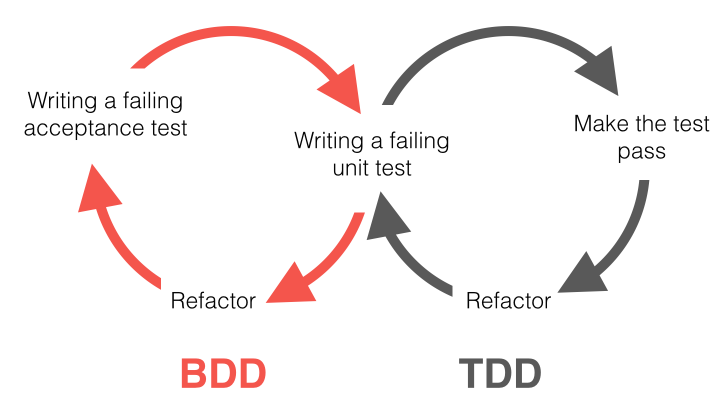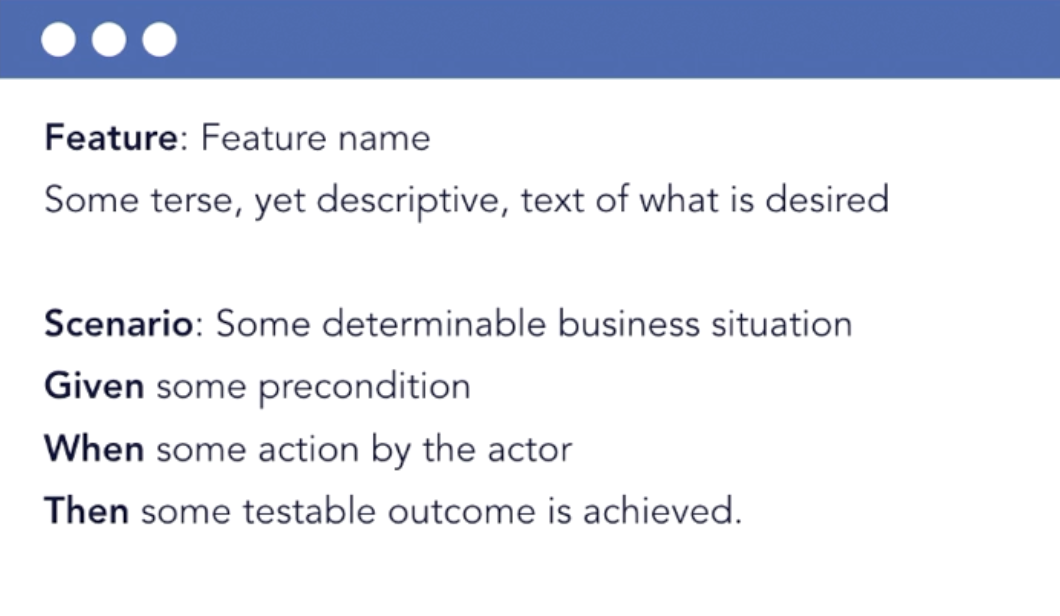🔍 What is Behavior-Driven Development (BDD) 🛠️
 Hardik Chotaliya
Hardik Chotaliya
Introduction
In this blog, we will explore the following key points:
Understanding BDD: Learn the basics of behaviour-driven development (BDD) and how it enhances collaboration with non-technical teams.
Integration with Agile: Discover how BDD fits into an agile workflow and helps in building the right thing by focusing on user and system behaviour.
Practical Application: Get hands-on experience with BDD frameworks like Cucumber and Gherkin, including writing requirements specifications, defining scenarios, and setting up tests.
Best Practices: Explore best practices for implementing BDD, emphasizing domain-driven and object-oriented design, and keeping the philosophy of behavior over function at the forefront.
TDD History
The Dark Age of Developer Testing:
Background: In the early days of software development, developers were often separated from the testing process. A book from 1976, "Software Reliability," even suggested that developers should never test their own code.
Impact: This created tension between developers and QA teams, as developers were blamed for code failures.
Emergence of Test-Driven Development (TDD):
Origins: TDD emerged from Extreme Programming (XP), a methodology created by Kent Beck in the 1990s.
Process: TDD involves writing a test before writing the code to pass that test. The steps are:
Write a test that fails.
Write the minimum code needed to pass the test.
Refactor the code to improve it while ensuring the test still passes.
Benefits: This approach helps developers build software iteratively and confidently, knowing that each piece of code is tested.
Challenges with TDD:
- Questions: Developers often struggled with what to test and how much to test. Miscommunication about requirements was common, leading to confusion.
What is Behavior-driven Development?
Creator: Dan North introduced BDD in a 2006 blog post titled "Introducing BDD."
Concept: BDD builds on TDD by focusing on the behaviour of the software from the user's perspective. Instead of just writing tests, BDD encourages writing tests that describe the behavior of the system.
Terminology: North suggested using the term "Behavior" instead of "Test" to make it clearer what the software should do. This shift helps both technical and non-technical stakeholders understand the requirements better.
Simplified Explanation:
| TDD | BDD |
| Think of TDD as a way to ensure your code works by writing tests first. It's like setting a goal (the test) and then doing the work (writing the code) to achieve that goal. | BDD takes this a step further by focusing on what the user wants the software to do. It's like having a conversation with the user to understand their needs and then writing tests to make sure those needs are met. |

Why This Matters for You:
Collaboration: BDD enhances collaboration between different teams, which is crucial in your role in software quality assurance.
Clarity in Requirements: By focusing on user behaviour, BDD helps clarify requirements, reducing the chances of building features that don't provide value.
Early Defect Identification: BDD can help identify defects earlier in the testing lifecycle, which aligns with your interest in automation and regression testing.
Gherkin specifications
Structure of Gherkin Files:
Plain Text: Gherkin files are saved as plain text with a
.featurefile extension.Line-Oriented: The language uses indentation to define structure, similar to Python or YAML.
Keywords in Gherkin:
Feature: This keyword provides a name and summary of a larger feature of the software.
Scenario: Indicates a single concrete example to test, with specific expectations for system behavior.
Given: Sets up the initial conditions before the scenario unfolds.
When: Describes the action taken on the system by an actor (person or event).
Then: Reflects the expected outcome or result of the scenario.
BDD examples

Example: Here's a simple example of a Gherkin scenario for a login feature:
Feature: User Login
Scenario: Successful login
Given the user is on the login page
When the user enters valid credentials
Then the user should be redirected to the dashboard
TDD vs ATDD vs BDD
| Aspect | TDD (Test-Driven Development) | ATDD (Acceptance Test-Driven Development) | BDD (Behavior-Driven Development) |
| Definition | Writing tests before writing code | Writing acceptance tests before writing code | Defining software behaviour with concrete examples |
| Focus | Ensuring code works correctly | Ensuring the system is usable and useful | Ensuring all scenarios are covered |
| Level of Abstraction | Low-level, detailed testing | Higher level than TDD | Higher level than TDD, similar to ATDD |
| Collaboration | Mainly developers | Business experts, developers, QA experts | Business experts, developers, QA experts |
| Test Examples | Unit tests for specific functionalities | Acceptance tests for overall system behaviour | Scenarios for system or sub-system behavior |
| Key Question | Is my code working correctly? | What should the system do to be usable? | Have we covered all possible scenarios? |
| Typical Authors | Developers | Developers, customers, domain experts, testers | Developers, customers, domain experts, testers |
BDD frameworks
Purpose of BDD Frameworks: BDD frameworks facilitate communication between business stakeholders, developers, and testers by providing a common language for acceptance criteria.
Popular BDD Frameworks:
Serenity: Automates acceptance tests and provides detailed reports.
SpecFlow: Uses Gherkin syntax for .NET and integrates with Visual Studio.
Jasmine: Tests JavaScript code with a clean syntax and no dependencies.
minitest: A lightweight Ruby framework supporting TDD, BDD, and more.
JGiven: Helps Java developers write readable BDD scenarios.
Cucumber: Automates BDD tests using Gherkin, merging specifications and test documentation.
🎯 Benefits of BDD for QA Teams
Enhanced Collaboration: BDD fosters open communication among team members, leading to a unified approach to software development and testing.
Improved Test Coverage: By focusing on behavior, BDD ensures that all user interactions are considered, resulting in more comprehensive testing.
Early Issue Identification: Defining behaviors upfront allows for the early detection and resolution of discrepancies, reducing costly fixes later in the development cycle.
🏁 Conclusion
Think of BDD as planning a trip. Instead of just focusing on the car (the code), you start by thinking about the destination (what the software should do) and the route (user stories and acceptance criteria). This way, you ensure you're heading in the right direction and meeting the needs of everyone on the trip.
Subscribe to my newsletter
Read articles from Hardik Chotaliya directly inside your inbox. Subscribe to the newsletter, and don't miss out.
Written by

Hardik Chotaliya
Hardik Chotaliya
👩💻 Automation QA Engineer || SDET ||✍🏼 Tech Blogger || WebdriverIO, JavaScript, TypeScript || based in 🇮🇳 || 🤓 Life-long learner ||Love ☕ & 🏏